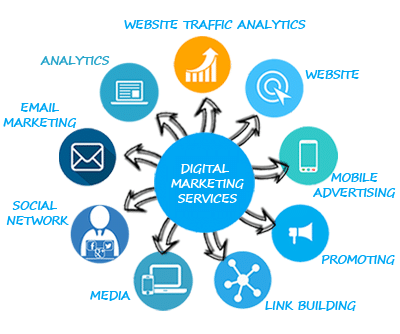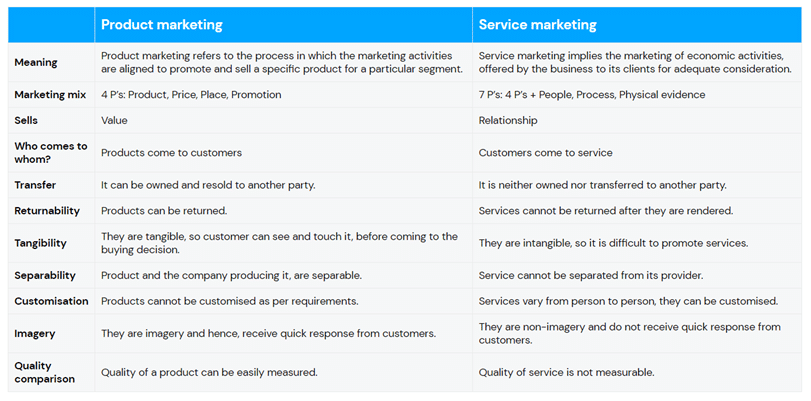
Products
Tangible products are often thought to be easier to market as they can be shown, demonstrated, touched, displayed and are easier for your audience to understand in terms of value or whether they are needed. Whether this is true or not is difficult to call, especially when you consider the blurred lines of the B2B technology world, where products and services are becoming more and more entwined.
Regardless, the aim of your marketing strategy should include finding the right market for your product and promoting it in a way that gets the best response from your target audience. It’s important to remember that your product stays the same regardless of who you are targeting and can be returned if the customer is dissatisfied.
Services
Services, being intangible, can be harder to show value. You can’t see or touch a service. Often, then, the goal of marketing services is to create good relationships with your target audience, developing and building trust. You are essentially selling yourself.

Customization
While products are designed, built and delivered to a range of customers ‘as standard’, services can be tweaked and customized depending on the needs or wants of customers. Your service marketing strategy should reflect this by highlighting the personal touches you provide or how you listen to your customers’ needs.
Delivery
When a business sells a product to a customer, the buyer takes it away with them. In the case of a service, the customer must go to the service provider if they want to enjoy or experience it. You cannot separate the service from the provider. For example, if you wanted to buy a DVD from Amazon, you click on the buy button and wait a couple of days for the product to arrive. However, if you want to enjoy the Amazon Prime streaming service, where movies are updated regularly, you need to head to the website and watch the film there.
When selling a service, make the customer experience as smooth and as simple as possible. It means making sure your customer touchpoints are connected and up to date.
Ownership
A product can be bought, used and then resold ‘second-hand’, while a service cannot – once it’s been consumed. A product is also a separate entity to the business who creates/sells it. A service, on the other hand, is always connected to the business who provides it. Marketing for services should be all about building the brand and personality of the service provider.
Expiration
It’s also important to understand that services are consumed immediately and cannot be returned once carried out. This is where the marketing goal of creating trust comes in.
Remember that if you provide a bad service, your customers cannot return the service, but they may not return as customers. Once a buyer has bought a product, it doesn’t mean they will buy from you again – but if they are happy with it, it’s more likely that they will. Providing a top-quality customer experience whether you’re selling a product or a service, should be priority number one.
Time
Usually, services are provided at a specific time for a specific period. After this, the service agreement must be renewed or cancelled. A product can be bought and owned without any time constraints.
Marketing differences here should center around the value of low-cost monthly subscriptions in the case of services, or a ‘buy once, use forever’ message for a product.
https://keydifferences.com/difference-between-product-and-service-marketing.html
https://www.fiftyfiveandfive.com/difference-between-product-and-service-marketing/